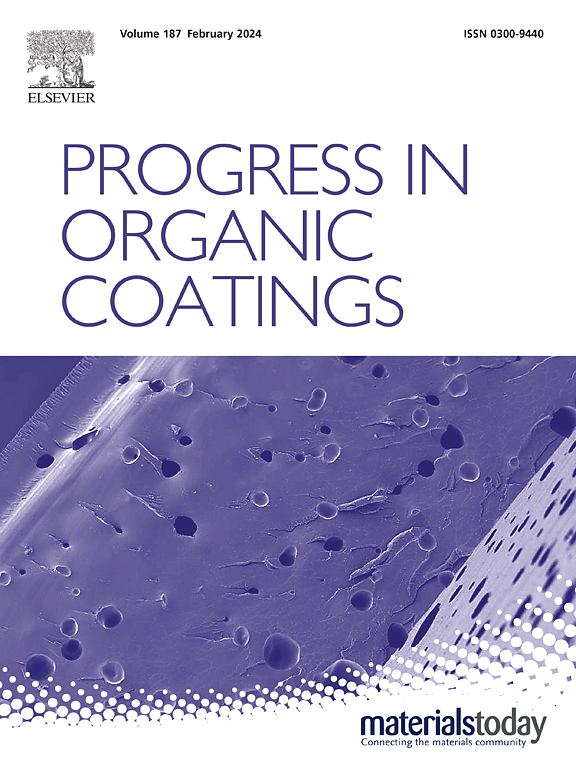Enhancing corrosion and wear resistance performances of epoxy coating with incorporation of solution processable gallocyanine-functionalized rGO
IF 6.5
2区 材料科学
Q1 CHEMISTRY, APPLIED
引用次数: 0
Abstract
The dispersion of reduced graphene oxide (rGO) nanosheets in organic solvents and its compatibility in polymer matrix is crucial to enhancing the anticorrosion and anti-wear performance of the formed composites. Herein, we developed a new exfoliation method using aromatic gallocyanine as dispersant via π-π interaction between rGO and gallocyanine molecules with the assistance of ball milling, and successfully obtained a well-dispersed rGO ethanol solution. Results obtained from transmission electron microscopy (TEM), Raman spectroscopy, UV–vis absorbance spectroscopy (UV-VIS) and scanning probe microscopy (SPM) reveal the successful exfoliation of rGO nanosheets. Furthermore, the corrosion and wear resistance of g-rGO/EP coating were systematically evaluated by electrochemical measurements, tribological tests, scanning electron microscope (SEM), laser scanning confocal microscopy (LSCM), and Raman spectroscopy. Results demonstrated that gallocyanine-dispersed rGO nanosheets endowed resin matrix with outstanding long-term anticorrosive and excellent anti-wear properties compared to pure epoxy resin (EP), whose impedance at low-frequency limit kept 4.789 × 109 Ω cm2 after immersing 75 days in 3.5 wt% NaCl and wear rate showed a decrease of nearly 74.8 %. The remarkable properties can be ascribed to the enhanced multi-layer barrier property and lubrication effect caused by g-rGO.

求助全文
约1分钟内获得全文
求助全文
来源期刊

Progress in Organic Coatings
工程技术-材料科学:膜
CiteScore
11.40
自引率
15.20%
发文量
577
审稿时长
48 days
期刊介绍:
The aim of this international journal is to analyse and publicise the progress and current state of knowledge in the field of organic coatings and related materials. The Editors and the Editorial Board members will solicit both review and research papers from academic and industrial scientists who are actively engaged in research and development or, in the case of review papers, have extensive experience in the subject to be reviewed. Unsolicited manuscripts will be accepted if they meet the journal''s requirements. The journal publishes papers dealing with such subjects as:
• Chemical, physical and technological properties of organic coatings and related materials
• Problems and methods of preparation, manufacture and application of these materials
• Performance, testing and analysis.
 求助内容:
求助内容: 应助结果提醒方式:
应助结果提醒方式:


